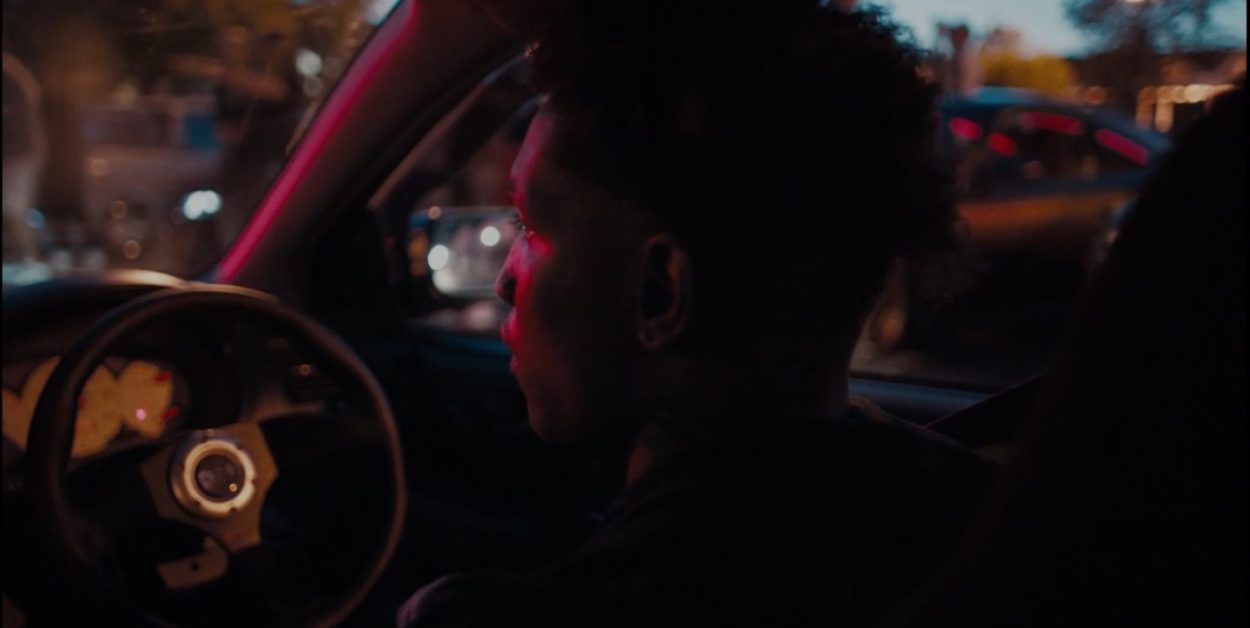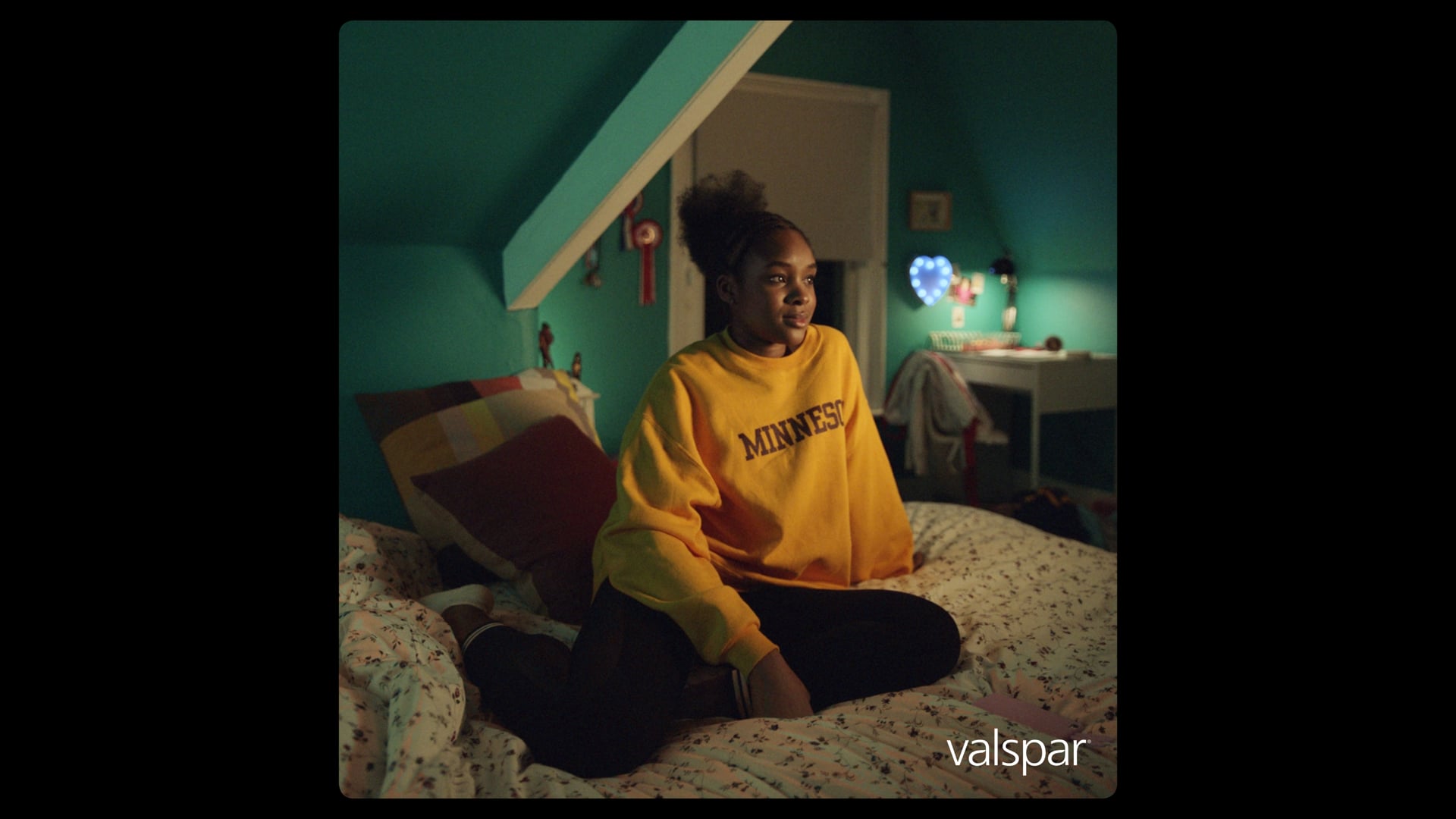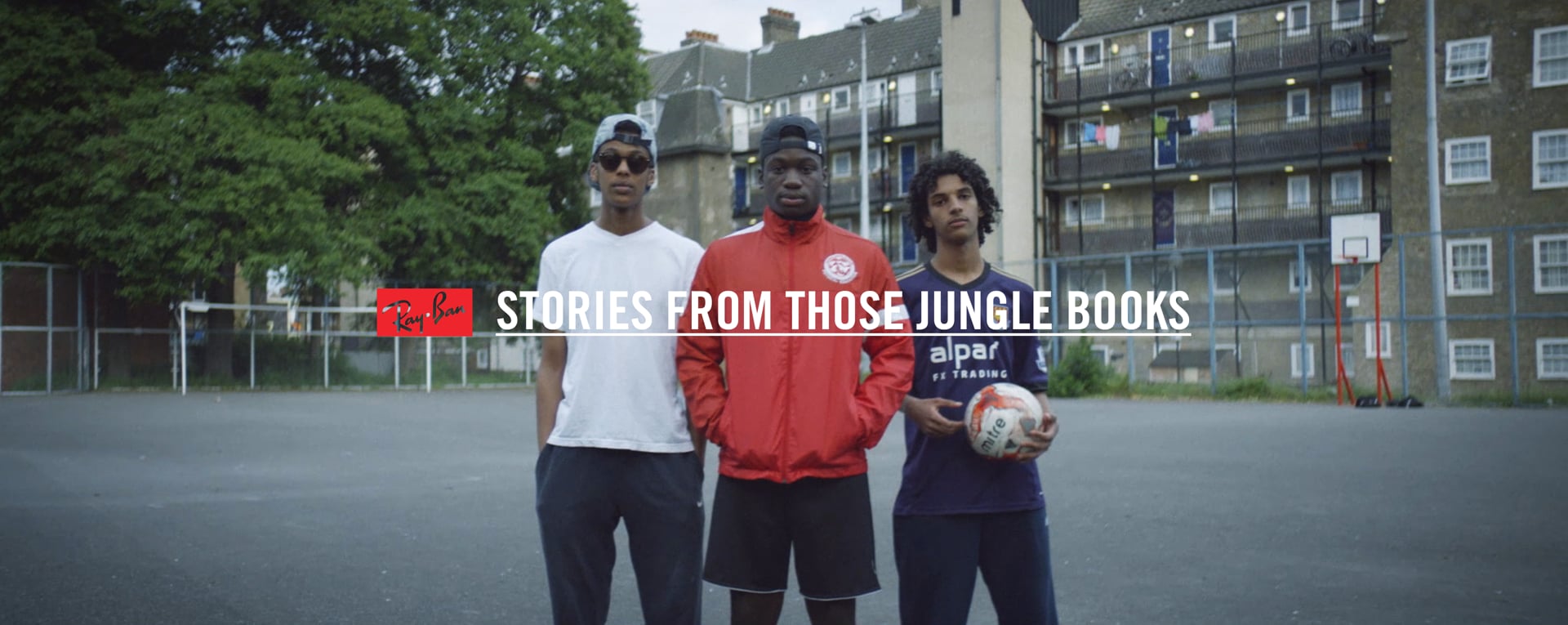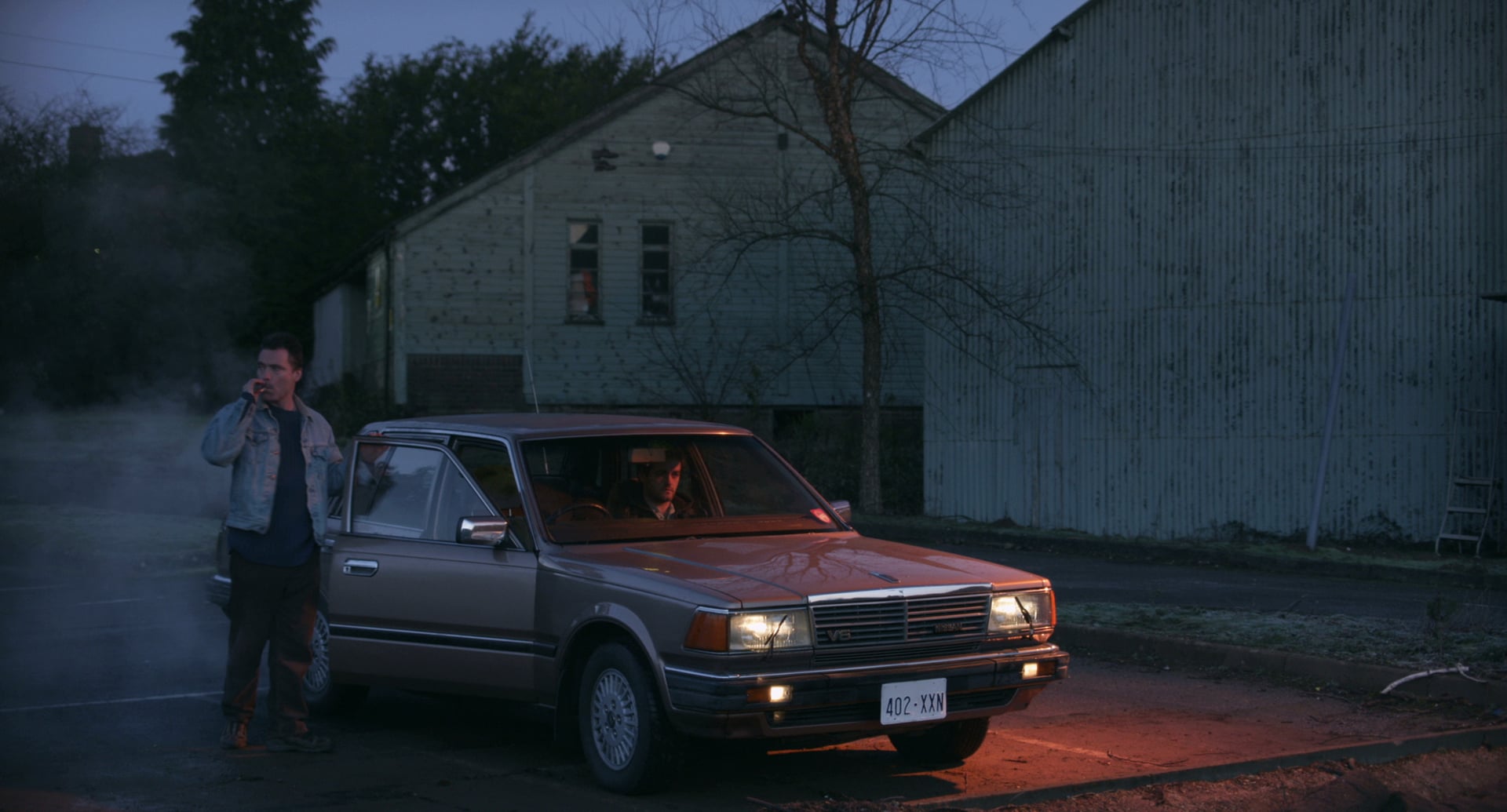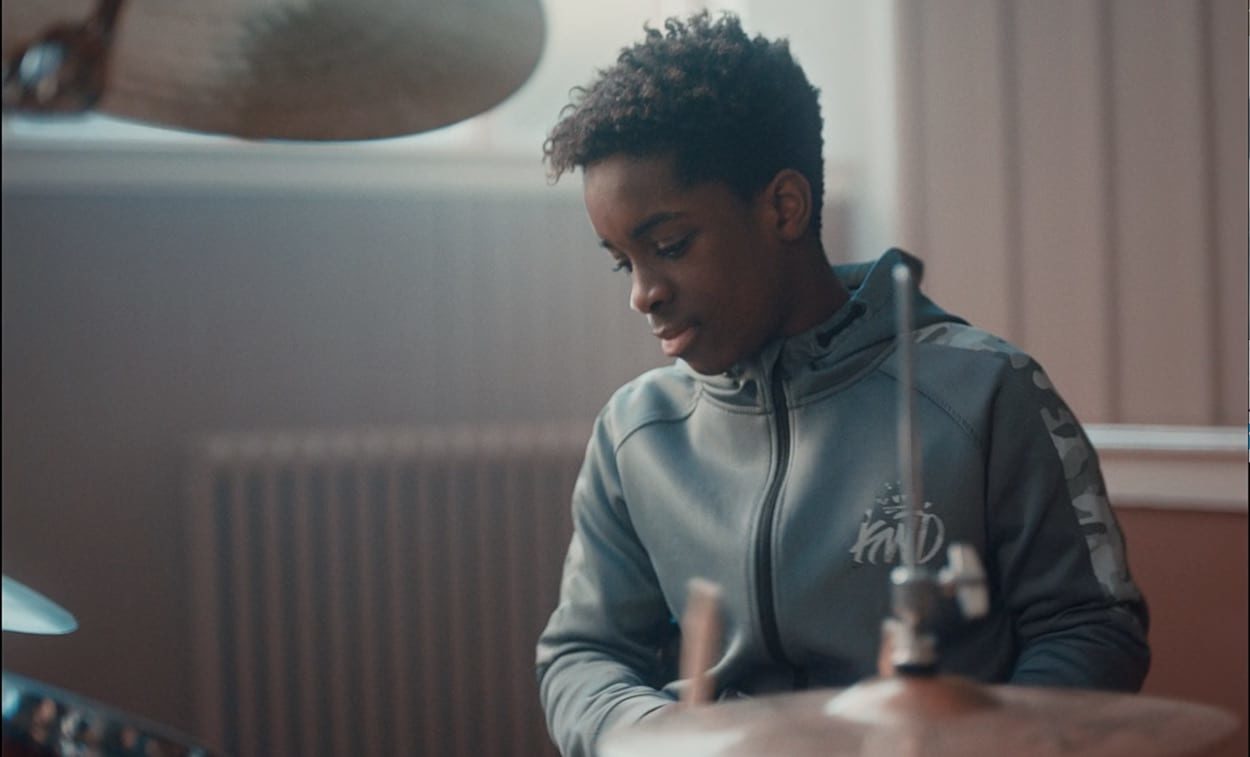[wce_code id=7]There’s an element of mystery to your narratives where nothing is explicitly spelt out in a linear storyline and yet the viewer becomes completely immersed in what is going on. For instance you set your latest film, a music video for Glaswegian producer Turtle’s trip-hop track Blood Type, at what looks like a car rally. How did you arrive at the decision to shoot at this particular event / location? Actually was it an event or was the whole set-up staged for the shoot? Either way it’s a fabulous vibe.
Thank you! We filmed Blood Type at an illegal street car meet-up in West London; the meets happen more or less every Sunday night in industrial estate car parks. As the police shuts them down, the meets get pushed away onto other spots.
The vibe is all about the display of cars and their owners; how much money went in making them special, how impassioned the owners are about them and what kind of stunts they can do. The event itself has a very peculiar atmosphere; on one side it is fuelled with adrenaline from the car donuts and burnouts and on the other it feels mundane and superficial as people just stand around taking pictures and chatting about geeky car stuff for hours.
I also loved how this hidden and illegal activity took place in such a mundane setting like a B&Q car park, it almost made these places feel surreal and as day tuned into night, the setting felt more and more disconnected to the real world.
The meet that we actually filmed was unlike others that we went to; some of them are quite intimating and dull (and very white). This meet was far more diverse, a melting pot of suburban and immigrant London. People are there to have a laugh, see each other and take pictures for their social media. There were families and an ice-cream van, it was just so unique and personal.
What was the original brief and how closely did you work with Jon Cooper (Turtle)?
There was actually no brief as the video wasn’t commissioned. As a fan of Turtle, I was just listening to Jon’s new album Human and then totally fell in love with its track BloodType. I reached out to Jon direct, sent him a rough treatment and started the conversation. He fell in love with the idea so we just had the blessing of Ali Raymond from Beatnik Creative. We had zero budget, as they never intended to shoot a video, so Jon and Beatnik just let us creatively run free with it.
Every frame is paced perfectly to the ethereal sound of Eliza Shaddad’s lyrics. Did the timing come together in the edit or did you have a pre-production shots list that you’d worked out to the soundtrack and stuck to it? How many fps did you shoot at – and was that a decision to match the dreamy track?
I was very inspired by Jon’s track, its lyrics and structure are so unconventional. I did deconstruct the track into sections and attached a shot list to them before we went filming, so visually, I knew the aesthetics I wanted and how they would work with the track but shooting at 100fps really added this dreamy feel. That set the tone of the edit and we surprised ourselves to see how well the track and those dreamy visuals matched together while editing.
What were the main challenges of the production and how did you resolve them?
LOL. The main challenge of production was that we had no money at all! So it was all about begging, borrowing and smiling. We got favours for kit and a crew excited enough to shoot in the total chaos of cars and people on a Sunday night in the middle of nowhere and we got there eventually!
Another challenge was to find the right car meet for the project, we had to do a lot of Instagram research and spent a few Sunday night excursions across London till we found that one before the shoot. Getting the trust of the drifters in letting us film was surprisingly not a problem at all, they were very happy and excited for us to come along and document it on a nice camera.
What was behind your decision to use different formats? What camera and lens did you use?
To be honest, using the phone footage wasn’t part of the original plan, but experiencing these meets we realised they’re embedded in the Youtube and Instagram culture. Literally, everyone seemed to be filming stuff on their phones and arguably the main reason why they get their cars out to meets. It seemed a no-brainer to include this perspective as it gave us both an honest and personal perspective to sit along side the more dreamy and cinematic stuff we were capturing. Also the phone footage is from the boys themselves who organised the meet.
On our main camera, Jack Wilkinson our DoP, ran around with an Amira and some Zeiss MKIII Super Speeds.
All of your films, including your locked off student film Belleville and Stories From The Jungle Books which you co-directed with Tom Ralph for Ray Ban, use very little camera movement, creating a stillness about the scenes – even if it is a tracking shot. What’s your creative process for the art direction? Do you sketch out scenes or write notes?
Do you devise the lighting and in-camera effects (we like the smokey cars) before hand with the DP?
I’m very influenced by photography with every film project I approach; I always try to capture my films with the same feeling a photograph gives you, a feeling of time and space to look it over and observe the frame and contents. I love how a still image or a long take allows you to explore the details, finding elements and meaning without forcing it – I always thought it gives you a feeling rather than a fact.
For instance in Belleville, my student film, the process started from looking at Gregory Crewdson and Larry Sultan’s photography. They became our map and guide for our art direction, framing and lighting. Sometimes the length of the shot is uncomfortable because it’s so immobile, wide and long but I like that because that feeling of not being able to escape is ingrained in the tonality of our narrative.
For Turtle, the style was quite documentary (because of the resources we had to film it that way) but in order to remove it from conventional documentary we shot everything on a tripod. It offered us this photographic quality and allowed the film to breathe. In a sense, the approach was more about the pacing and composition than the art direction and lighting.
Where did you learn the craft of filmmaking?
When I was 18 I moved to London and started a course in filmmaking at the University of the Arts London/ London College of Communication. I did a 3 year BA which resulted in Belleville in the final year.
After that I worked in-house at production company Knucklehead as a creative researcher and directors assistant. This time really allowed me to learn both how different – and incredibly talented – directors work and think but also how the industry works as a whole.
Please describe your childhood.
My childhood was very inspiring but not in obvious ways. I grew up in the real Belleville (not the Paris one but the one near Lyon) with my Dad. It’s a very small, suburban town surrounded by vineyards. It’s pretty and peaceful, but for me I found it boring and oppressive. Thinking back, at night groups of bored North African boys would drive the streets in their tuned up cars. It was probably the start of my fascination with drifting!
I didn’t have much escapism as a teenager, especially for one who’s into the Arts and Cinema. For a long time I wasn’t exposed to different cultures or ways of thinking than that of the inhabitants of Belleville. However, my Dad was a volunteer at the local cinema and he also had an amazing VHS collection of films from David Lynch to Stanley Kubrick which all resonated with me. My Mom was living in London for the whole of my childhood and my Step-Dad was a photographer. He introduced me to incredible photographers and films and gave me a photo camera which I took back to France. Taking pictures was the way for me to escape the stillness of Belleville and allowed me to develop into a filmmaker.
You live in London but are French. Where do you call home?
Well I never felt like I belonged from where I grew up and my Dad is Austrian so have spent some time there too. I always loved London but it’s starting to wear me out a bit now too haha! I don’t think I found my home yet, but I always felt like a true European so maybe I’ve got little bits of home here and there.
What triggered your desire to make films?
I think it was taking photographs of intimate moments with friends and family. And I know it sounds cliché but Stanley Kubrick blew my mind. I was studying for a baccalaureate in science when I suddenly changed my mind and I would have watched 2001: a Space Odyssey about ten times then. I think it was also a decision to move to London and do something exciting for a living.
Anything else you’d like to share?
Well I think I’d like to give a big up to everyone that made that project a reality – to make a video like this without any money is very hard and it relied so much on the passion and time of the people involved. So a big thanks to Sorcha Bacon and Archie Hollway who produced it, Jack Wilkinson who shot it, Knucklehead who picked up the tab, Charlie Reddie at STITCH who cut it, Oisin O’Driscoll at The Mill who graded it and Toby Williams- Ellis at Ruffian Post who cleaned it up.
LINKS:
@knucklehead_hq on Twitter and Instagram
